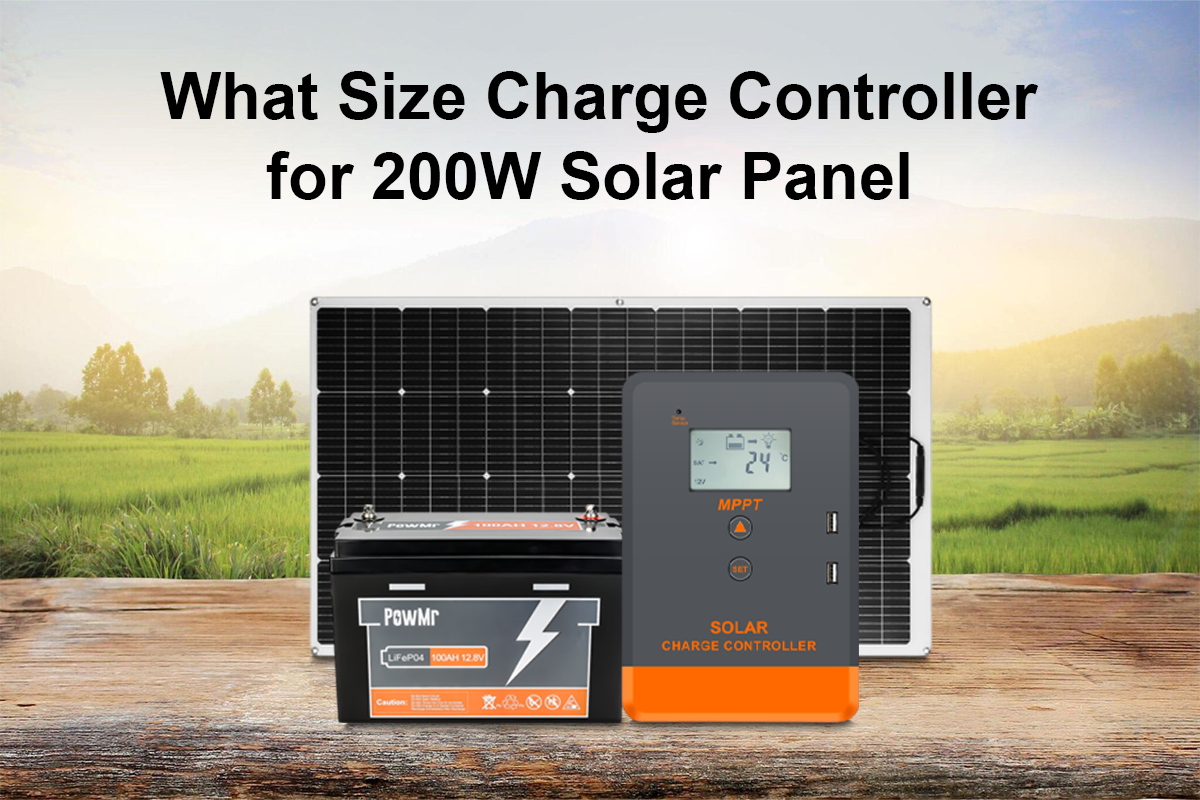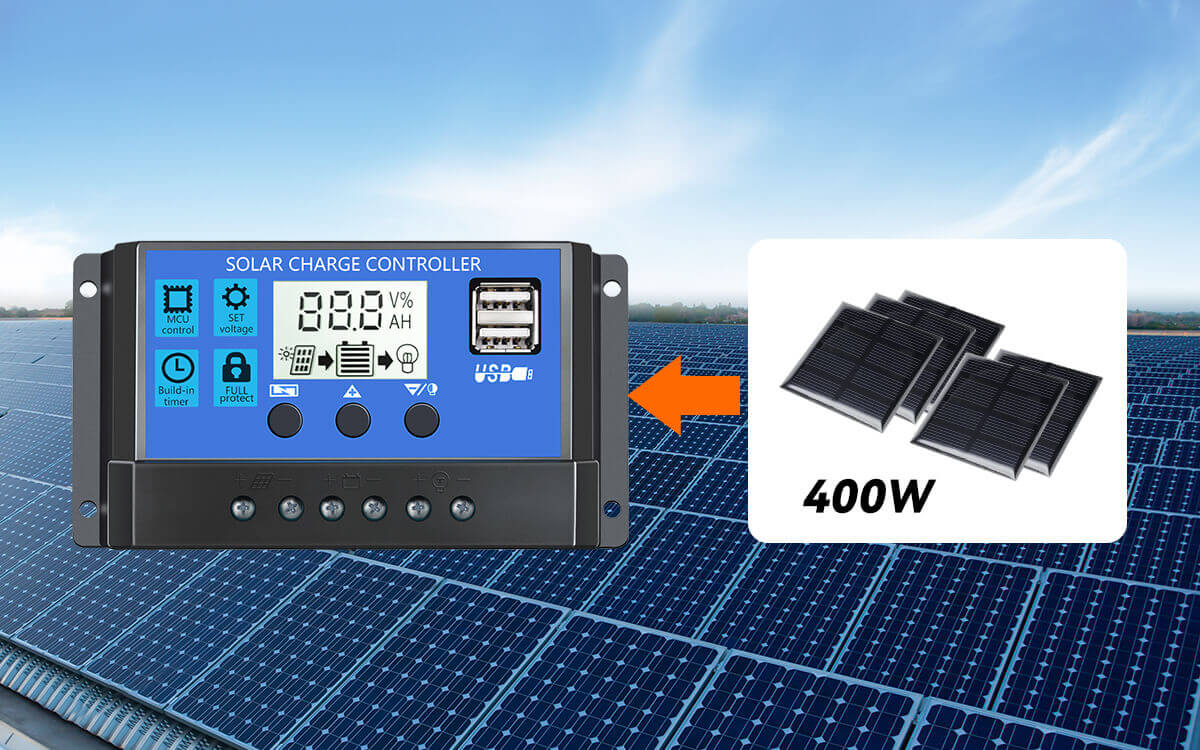When setting up a solar power system, choosing the right components is crucial for optimal performance and longevity. One critical component is the solar charge controller, which regulates the power flow from the solar panels to the battery bank. Understanding how to size the charge controller for your specific setup is paramount for efficiency and safety.
Generally, 20A solar charge controller is suitable for a 200w solar panel system. In this article, we’ll explain why this size is appropriate and which type of charge controller is best suited for a 200W solar setup.
Selecting the appropriate MPPT solar charge controller for a 200W solar panel necessitates thorough consideration of various factors to ensure efficiency and compatibility. Here are the key questions to address before making a purchase:
Factor1 - What is the maximum power of the solar panel
The mamximum power of a solar panel, often referred to as Pmax, represents its peak performance output power under ideal circumstances(STC). This metric is essential for ensuring compatibility with solar charge controllers.
Locate the Pmax value either on the label affixed to the rear of the panel or within its datasheet. It is imperative to verify that the total power output of the solar panel does not surpass the maximum PV input power supported by the chosen controller.
Factor2 - What is voltage of the battery bank
Charge controller size is determined by dividing the solar panel wattage by the battery voltage to calculate current (amps). For example, a 200W panel charging a 12V battery bank draws about 16.7A, which is why a 20A charge controller is sufficient for a 200W solar panel.
It’s important to understand that battery bank voltage depends on how the batteries are connected. In a series connection, battery voltages are added together, while in a parallel configuration, the voltage remains the same but capacity (amp-hours) increases. This configuration directly influences the current your charge controller must handle.
Related Article:Wiring Batteries in Series vs Parallel in Solar Power System
Regardless of whether your system uses a 12V, 24V, or 48V battery bank, you can determine the required charge controller size using the formula:
Charge Controller Current (A) = Total Solar Panel Wattage (W) ÷ Battery Bank Voltage (V)
PWM or MPPT: Which Charge Controller Is Right for a 200W Solar Panel?
When it comes to choosing between a PWM or MPPT charge controller for a 200W solar panel system, the difference in performance is not significant. If you check the specifications of a typical 200W panel, you'll see that it always belowe 24V—often operating near 18V under standard test conditions—which is close to the charging voltage of a 12V battery.
Under these conditions, the efficiency advantage of an MPPT controller over a PWM is minimal. Therefore, a PWM controller is a cost-effective and practical option for this setup. However, if you plan to expand your system in the future, investing in an MPPT controller might be the better long-term choice.
Related Article: Role of Solar Charge Controller & How Does It Work
In either case, you can choose a controller with a higher current rating, such as 25A, 35A, or even 40A, as long as its output current remains within the maximum charging current limit of your battery bank.
Other considerations when choosing a solar charge controller
How many amps does a 200W solar panel produce
When selecting a charge controller, aside from considering the open-circuit voltage, another crucial parameter of the solar panel to take into account is the Isc, or short-circuit current of the solar panel. The Isc represents the current that flows out of the solar panel when the positive and negative leads are shorted under standard test conditions, indicating the maximum current the panel can deliver without damage.
What is the working voltage range of a charge controller?
Furthermore, for optimal efficiency and maximum power output from the solar panels, it remains crucial to take into account the Maximum Power Voltage (Vmp) of the solar panel.
The operating voltage range of the solar charge controller should encompass the Vmp of the solar panel to guarantee efficient energy conversion across varying sunlight conditions and load demands.
Are the solar panels connected in series?
When solar panels are connected in series, their voltages add up. Therefore, it’s essential to consider the solar panel array’s total Voc (open-circuit voltage), which represents the maximum voltage output without any load, typically measured under Standard Test Conditions (STC).
To ensure safe and reliable operation, the charge controller’s maximum input voltage rating can not lower than the combined Voc of the solar panels connected in series.
Is your solar system exposed to extreme temperatures?
Temperature affects solar panel voltage and battery charging efficiency. High temperatures reduce panel voltage and power, while low temperatures can raise voltage beyond controller limits. Battery charging performance also varies, risking overcharge or undercharge. Controllers with temperature compensation or external sensor support help maintain safety and performance, especially in extreme climates.



